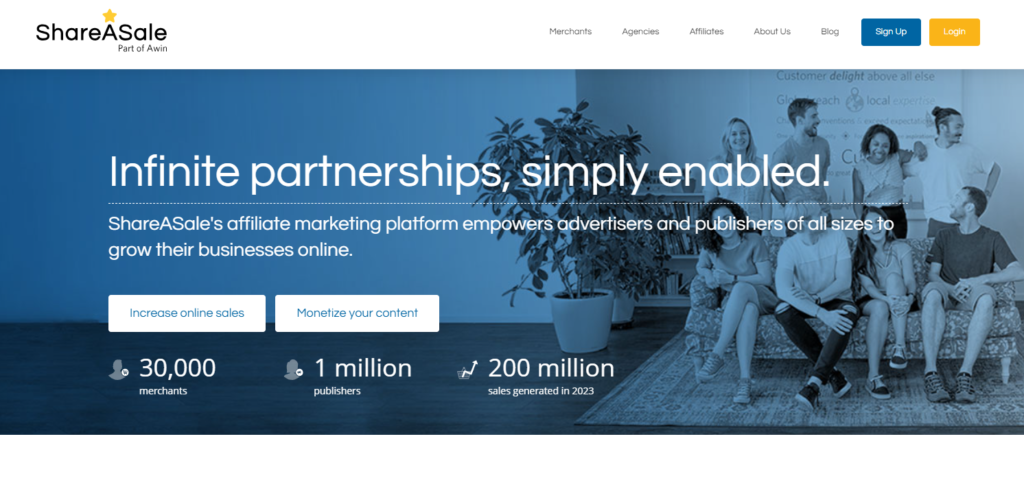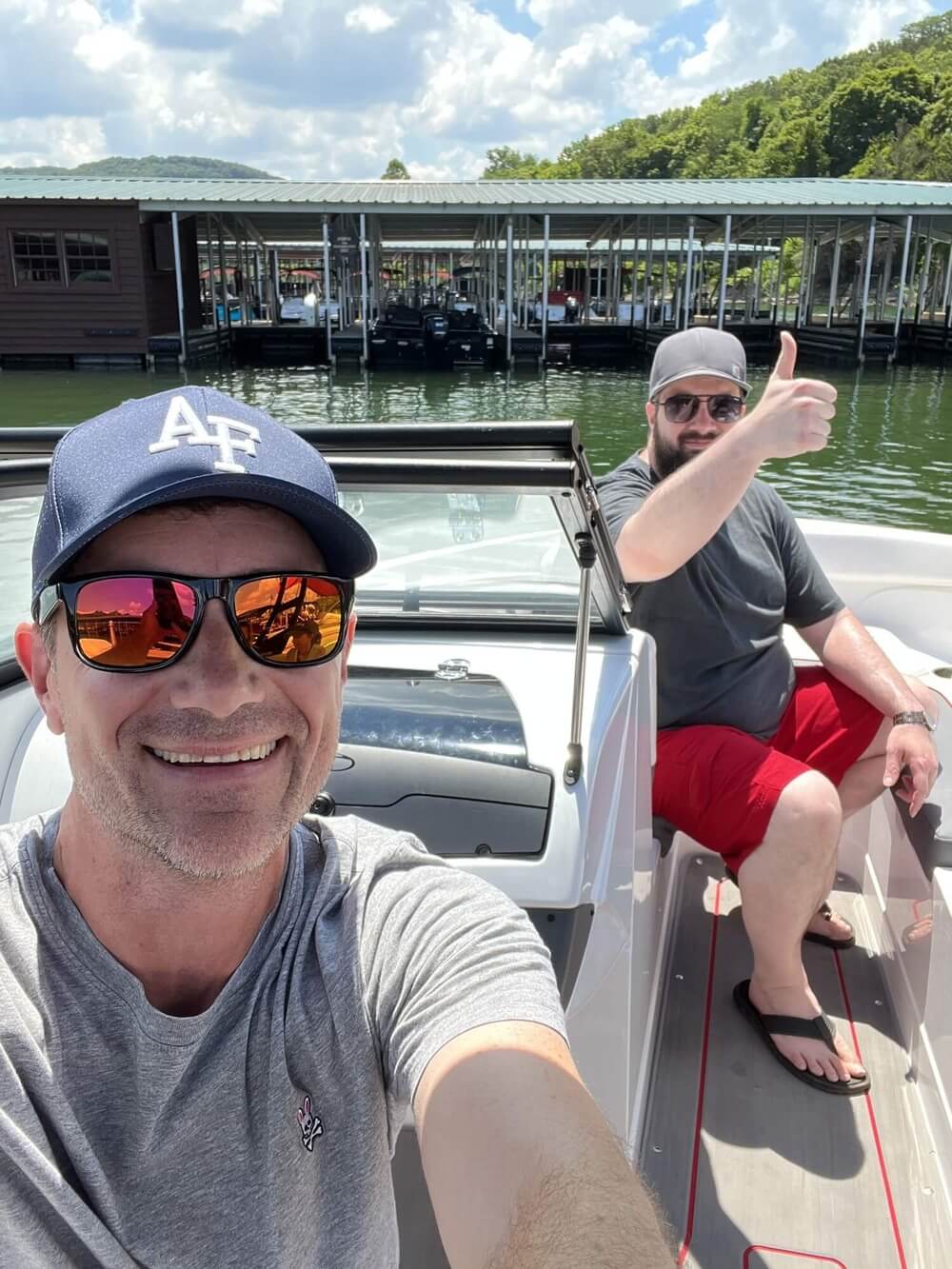
Dreaming of traveling the world and getting paid for it? Travel blogging is a dream job for many, offering the freedom to explore the world while sharing your adventures with a global audience. But turning this passion into a profitable venture requires more than just stunning photos and captivating stories.
One of the most effective ways to generate income from your travel blog is through sponsorships. In this article, we’ll explore how you can attract sponsors, create valuable partnerships, and ultimately monetize your travel blog. Whether you’re a seasoned blogger or just starting out, these tips will help you navigate the world of sponsorships and turn your travel passion into a sustainable income stream.
TL;DR
- Build a strong, engaged audience: Focus on high-quality content, consistent posting, and SEO optimization using tools like SEMrush and Ahrefs.
- Craft a professional media kit: Showcase your blog’s reach, engagement, and audience demographics using Google Analytics.
- Identify relevant brands: Target companies whose products or services align with your niche and audience.
- Negotiate fair rates: Research industry rates using Influencer Marketing Hub and know your worth. Always get agreements in writing.
- Deliver high-quality sponsored content: Maintain your blog’s integrity and authenticity; clearly disclose sponsored content using appropriate disclaimers.
- Track your results: Monitor your ROI and refine your strategies using Google Analytics and social media analytics.
- Diversify your income streams: Explore affiliate marketing (Amazon Associates, ShareASale), advertising (Google AdSense), and selling your own products (Shopify).
Building Your Travel Blog Empire: A Step-by-Step Guide
Before you can start earning money from sponsorships, you need a travel blog that captivates readers and establishes you as a credible voice in your niche. This isn’t just about pretty pictures; it’s about building a loyal following who trust your recommendations and engage with your content.
Step 1: Creating a Captivating Travel Blog
Before you can attract sponsors, you need a compelling blog. This means high-quality, engaging content that showcases your unique travel style and expertise. Think stunning photography, well-written narratives, and helpful tips for fellow travelers. Consistency is key – aim for regular posts to keep your audience engaged and coming back for more.
- Niche Down: Specialize! Instead of writing about everything, focus on a specific travel niche. Are you a budget backpacker? A luxury traveler? A foodie adventurer? A sustainable travel advocate? A niche helps you attract a targeted audience more likely to engage with your content and attract relevant sponsors. Example: Budget backpacking in Southeast Asia.
- SEO Optimization: Learn the basics of search engine optimization (SEO). Use relevant keywords in your blog posts to improve your search engine rankings and attract organic traffic. Tools like SEMrush and Ahrefs can help you research keywords and track your progress. Example: Keywords like “budget backpacking Southeast Asia,” “cheap hostels Vietnam,” or “affordable food Thailand.”
- High-Quality Content: Invest in professional-quality photos and videos. Your visuals are crucial for attracting readers and showcasing your travel experiences. Consider using Canva for creating visually appealing graphics and editing photos.
Step 2: Crafting a Professional Media Kit
Your media kit is your sales pitch. It should showcase your blog’s reach, engagement, and audience demographics. Include:
- Blog Overview: Briefly describe your blog’s focus and target audience.
- Audience Demographics: Provide data on your readers’ age, location, interests, and online behavior. Use Google Analytics to gather this information. Example: 70% of your audience is aged 25-35, located primarily in North America and Europe, and interested in sustainable and adventurous travel.
- Engagement Metrics: Include metrics like website traffic, social media followers, email subscribers, and average session duration.
- Advertising Rates: Clearly state your rates for sponsored posts, taking into account your reach and engagement. Research industry rates using resources like Influencer Marketing Hub. Example: $500-$1000 per sponsored post, depending on the scope of the project.
- Testimonials: Include positive feedback from previous clients or collaborators if available. If not, focus on the value you provide.
- Contact Information: Make it easy for brands to reach you.
Creating a compelling media kit is crucial for attracting sponsors. To learn more about effectively presenting your blog’s value and securing partnerships, consider watching this insightful video on building a strong brand and attracting clients: Who Should Be Your FIRST Employee?. This resource offers valuable insights into building a strong brand presence and attracting ideal clients, which is directly applicable to attracting sponsors for your blog.
For More Free Videos, Subscribe to the Rhodes Brothers YouTube Channel.
Remember to keep your media kit updated regularly to reflect your blog’s growth and evolving audience. A well-maintained media kit is a dynamic tool that showcases your value proposition effectively.
Step 3: Identifying the Right Sponsors
Not all sponsors are created equal. Focus on brands that align with your blog’s niche and values. Consider:
- Brand Alignment: Choose brands whose products or services resonate with your audience. For example, if you’re a budget traveler, partnering with a budget airline or hostel chain makes sense. Example: If your blog focuses on eco-friendly travel, partner with Patagonia or sustainable tourism organizations.
- Target Audience: Ensure the brand’s target audience overlaps with your blog’s readership. Analyze your Google Analytics data to understand your audience better.
- Brand Reputation: Partner with reputable brands that share your values and commitment to quality. Research the brand thoroughly before reaching out.
Step 4: Negotiating Sponsorship Deals
Once you’ve identified potential sponsors, it’s time to negotiate. Remember, you’re offering valuable exposure to their brand. Don’t undervalue your services!
- Research Industry Rates: Use resources like Influencer Marketing Hub to research average sponsorship rates for blogs with similar reach and engagement.
- Be Professional: Communicate clearly and professionally throughout the negotiation process. Be prepared to answer questions about your audience and your reach.
- Get it in Writing: Always have a written agreement outlining the terms of the sponsorship, including payment, deliverables (e.g., number of posts, social media mentions), and deadlines. Use a contract template if you’re unsure what to include.
Step 5: Creating High-Quality Sponsored Content
When creating sponsored content, maintain your blog’s authenticity and integrity. Transparency is key. Clearly disclose any sponsored content using appropriate disclaimers.
- Authenticity: Only partner with brands you genuinely believe in and whose products or services you would recommend to your readers. Don’t promote something you wouldn’t use yourself.
- Transparency: Clearly disclose sponsored content using phrases like “Sponsored Post,” “Sponsored by [Brand Name],” or “#ad.” Follow FTC guidelines for disclosure.
- Value: Focus on providing value to your readers. Don’t just promote the product; show how it enhances their travel experience. Integrate the product naturally into your content. Example: Instead of simply saying “Use this amazing sunscreen,” write a blog post comparing different brands and highlighting their benefits for different skin types and activities.
“The only way to do great work is to love what you do. If you haven’t found it yet, keep looking. Don’t settle.” – Steve Jobs This quote perfectly encapsulates the importance of passion in building a successful travel blog.
Step 6: Tracking Your Results
Monitor your results to see which strategies are working and which need improvement. Use Google Analytics to track website traffic, social media engagement, and conversions.
- Key Metrics: Track website traffic, social media engagement, click-through rates (CTR), and conversions (e.g., sales, sign-ups).
- A/B Testing: Experiment with different approaches to see what resonates best with your audience. Try different headlines, images, and calls to action.
- Refinement: Continuously refine your strategies based on your results. What’s working? What’s not? Adjust accordingly. Example: Use Google Analytics to track website traffic before, during, and after a sponsored campaign. Compare your CTR and conversion rates to see the impact.
Step 7: Diversifying Your Income Streams
Don’t rely solely on sponsorships. Diversify your income streams to create a more sustainable and resilient business.
- Affiliate Marketing: Earn commissions by promoting products or services through affiliate links. Use affiliate networks like ShareASale or Amazon Associates. Example: Recommend specific travel gear or booking platforms using affiliate links.

- Advertising: Display ads on your blog using platforms like Google AdSense.
- Selling Products: Create and sell your own travel-related products, such as ebooks, guides, or merchandise. Consider offering online courses or workshops. Example: Create and sell an ebook titled “The Ultimate Guide to Budget Backpacking in Southeast Asia.”
Actionable Steps to Monetize Your Travel Blog with Sponsorships
For Beginners (Less than 6 months of blogging)
- Focus on Building Your Audience: Before seeking sponsors, prioritize creating high-quality content consistently. Aim for at least one blog post per week. Focus on building a strong foundation of organic traffic through SEO and social media engagement.
- Niche Down: Choose a specific travel niche (budget backpacking, luxury travel, family travel, etc.) to attract a targeted audience. This makes it easier to find relevant sponsors later on.
- Engage on Social Media: Promote your blog on relevant social media platforms (Instagram, Pinterest, Facebook, TikTok). Interact with your followers, respond to comments, and build a community around your brand.
- Create a Basic Media Kit: Even with a small following, a media kit showcasing your blog’s content, audience demographics (even estimated ones), and engagement metrics is valuable. Keep it simple and focus on the value you offer.
- Reach Out to Smaller Brands: Start by contacting smaller, local businesses or brands related to your niche. They may be more open to collaborating with smaller bloggers.
For Intermediate Bloggers (6-18 months of blogging)
- Refine Your Niche: Analyze your blog’s performance and audience engagement to further refine your niche. Focus on the content that resonates most with your audience.
- Improve SEO: Implement advanced SEO strategies to improve your blog’s search engine rankings. Use tools like SEMrush or Ahrefs to identify relevant keywords and optimize your content accordingly.
- Develop a Professional Media Kit: Update your media kit with accurate data on your blog’s traffic, audience demographics, and engagement metrics from Google Analytics. Include testimonials if available.
- Target Mid-Sized Brands: Reach out to mid-sized brands that align with your niche and audience. Prepare a tailored pitch showcasing the value you can offer them.
- Explore Affiliate Marketing: Supplement your income with affiliate marketing by promoting relevant products or services through affiliate links.
For Experienced Bloggers (18+ months of blogging)
- Diversify Content Formats: Expand your content beyond blog posts to include videos, podcasts, infographics, and other formats to engage your audience and attract more sponsors.
- Build Relationships with Influencers: Collaborate with other travel bloggers or influencers in your niche to cross-promote your content and reach a wider audience.
- Create a Comprehensive Media Kit: Develop a professional media kit that includes detailed audience demographics, engagement metrics, case studies of successful past collaborations, and different sponsorship packages.
- Target Larger Brands: Reach out to larger brands with a strong presence in your niche. Prepare compelling proposals demonstrating the value you can offer them, including potential ROI.
- Negotiate Favorable Rates: Based on your blog’s performance and audience engagement, negotiate competitive sponsorship rates. Don’t undervalue your services.
- Explore Multiple Income Streams: Beyond sponsorships and affiliate marketing, explore other income streams such as selling digital products (eBooks, online courses), offering consulting services, or running paid workshops.
Common Mistakes & Quick Fixes for Travel Blog Monetization
- Underestimating Your Worth: Research industry rates (Influencer Marketing Hub), calculate your blog’s value (audience size, engagement), and negotiate confidently.
- Ignoring Your Audience: Analyze Google Analytics, create content matching their interests, and engage actively (comments, social media).
- Neglecting SEO: Use keyword research tools (SEMrush, Ahrefs), optimize on-page content (titles, headings, meta descriptions), and build backlinks.
- Lack of Transparency: Clearly disclose sponsored content (“Sponsored Post,” “#ad”) and be upfront about brand partnerships.
- Poor Communication: Use written contracts, communicate regularly with sponsors, and maintain professionalism.
Frequently Asked Questions
How do I get started with travel blogging?
Start by identifying your niche and creating a blog. Focus on high-quality content and consistent posting. Promote your blog on social media and engage with your audience.
How do I find sponsors for my travel blog?
Create a compelling media kit and reach out to brands that align with your niche and values. Attend industry events and network with potential sponsors.
How much can I earn from sponsored posts?
Earnings vary depending on your blog’s reach, engagement, and the sponsor’s budget. Research industry rates to get an idea of what to expect.
How do I negotiate sponsorship deals?
Research industry rates, communicate clearly and professionally, and always have a written agreement.
How do I maintain authenticity with sponsored content?
Only partner with brands you genuinely believe in and always disclose sponsored content.
What are some common mistakes to avoid?
Don’t undervalue your services, don’t ignore your audience, and don’t neglect your blog’s SEO.
What tools can help me manage my travel blog?
Use tools like Google Analytics, Canva, SEMrush, and Ahrefs.
How can I increase my blog’s reach?
Promote your blog on social media, collaborate with other bloggers, and participate in relevant online communities.
How do I build a strong relationship with my audience?
Engage with your readers in the comments section, respond to emails, and host contests or giveaways.
What if I don’t have a large following yet?
Start small, focus on building a strong foundation, and gradually increase your reach. Pitch to smaller brands initially to gain experience and build your portfolio.
Level Up Your Travel Blog
So, you’re ready to turn your travel passion into profit? This guide has shown you how to leverage sponsorships to monetize your travel blog. Remember these key takeaways:
- Build a strong, engaged audience: High-quality, consistent content is key. Use SEO to get found.
- Craft a killer media kit: Showcase your blog’s reach and audience. Use Google Analytics to back up your claims.
- Find the right sponsors: Target brands that align with your niche and values.
- Negotiate fair rates: Know your worth! Research industry standards.
- Deliver amazing content: Maintain authenticity and transparency. Always disclose sponsored posts.
- Track your results: Use analytics to see what works and refine your strategy.
- Diversify your income: Explore affiliate marketing, advertising, and selling your own products.
Ready to take the leap? Start with one actionable step today – either create a compelling media kit or reach out to a brand that aligns with your blog. Don’t wait for the perfect moment; start building your dream!
Thank you for reading! Want more tips and strategies to help you succeed in travel blogging and beyond? Check out the Rhodes Brothers YouTube Channel for the latest videos and information. Subscribe today and join our community!
Resource List
Books
- “Blogging for Dummies” by Susannah Streeter: A comprehensive guide to blogging, covering topics from setting up a blog to monetizing it.
- “The Content Fuel Framework: How to Create Content That Drives Sales” by Melanie Deziel: Focuses on creating high-quality content that converts. Relevant for creating compelling sponsored posts.
- “Jab, Jab, Jab, Right Hook: How to Tell Your Story in a Noisy Social World” by Gary Vaynerchuk: Provides insights into effective social media marketing, crucial for promoting your blog and engaging with sponsors.
- “Platform: Get Noticed in a Noisy World” by Michael Hyatt: Focuses on building a strong online presence and attracting a loyal following.
- “Building a StoryBrand: Clarify Your Message So Customers Will Listen” by Donald Miller: Helps you craft a clear and compelling brand message, essential for attracting sponsors and resonating with your audience.
Courses & Workshops
- Skillshare: Offers various courses on blogging, content creation, social media marketing, and photography. Search for courses related to “travel blogging,” “content marketing,” and “social media for bloggers.”
- Udemy: Similar to Skillshare, Udemy offers a wide range of courses on various aspects of blogging and online business.
- Teachable: A platform where many individual entrepreneurs and experts offer courses on travel blogging, affiliate marketing, and other relevant topics. Search for courses on “travel blogging monetization” or “affiliate marketing for bloggers.”
Podcasts
- The Smart Passive Income Podcast: Focuses on building profitable online businesses, including blogging and affiliate marketing.
- The Authority Hacker Podcast: Provides in-depth strategies for building authority websites and generating income through various methods.
- Travel Massive Podcast: Focuses on the travel industry and offers insights into travel blogging and marketing.
Blogs & Websites
- Neil Patel: A leading digital marketing expert with a wealth of information on SEO, content marketing, and social media marketing.
- HubSpot: Offers resources and insights on inbound marketing, content marketing, and social media marketing.
- Copyblogger: Provides valuable information on content creation, copywriting, and marketing.
Tools
- Google Analytics: Essential for tracking website traffic, audience demographics, and campaign performance.
- SEMrush & Ahrefs: Keyword research and SEO tools.
- Canva: Graphic design tool for creating visually appealing images and graphics.
- WordPress: Popular blogging platform.
- Yoast SEO: WordPress plugin for optimizing your blog posts for search engines.
- Grammarly: Proofreading and grammar checking tool.
- Mailchimp or ConvertKit: Email marketing platforms for building your email list.
- Influencer Marketing Hub: Researching industry rates and influencer marketing data.
- Later or Buffer: Social media scheduling tools.
Affiliate Networks
- Amazon Associates: One of the largest and most popular affiliate marketing programs.
- ShareASale: A large affiliate network with many different brands and products.
- ClickBank: Another popular affiliate network with a wide range of digital products.
How to Monetize Your Travel Blog with Sponsorships] Cheat Sheet
- Build a strong, engaged audience.
- Craft a compelling media kit.
- Identify relevant brands.
- Negotiate fair rates.
- Deliver high-quality sponsored content.
- Track your results.
- Diversify your income streams.
- Use Google Analytics, Canva, SEMrush, and Ahrefs.
- Maintain authenticity and transparency.
- Don’t undervalue your services.
- Focus on creating valuable content.
- Optimize your blog for search engines.
- Engage with your audience.
- Collaborate with other bloggers.
- Attend industry events.
- Network with potential sponsors.
- Always have a written agreement.
- Clearly disclose sponsored content.
- Monitor your results and refine your strategies.
- Explore affiliate marketing and advertising opportunities.
- Create and sell your own travel-related products.






